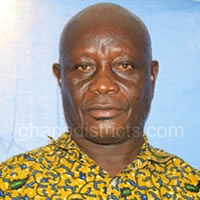Topology & drainage
The district falls within the Voltarian Basin and the Southern Voltarian Plateau physiographic regions. The Voltarian Basin is made up of flat-bedded rocks and is extremely plain with rolling and undulating land surface with an elevation of between 60-150metres above sea level.
The Southern Voltarian Plateau occupying the Southern and South-eastern part of the district is characterised by series of escarpments. Many rivers and streams drain the district.The major ones are River Pumpum, River Oyoko, River Nante and River Tanti.
These rivers flow to join the Black Volta. Most of the rivers are intermittent in nature and thus fluctuate in volume.
These features of the rivers make them unreliable for irrigation purposes with the exception of River Nante, which offer opportunities for irrigation.
Other features of the rivers are swallow holes on River Oyoko on the road between Krabonso and Anyima and the waterfalls on River Odum near Kokuma, which flows to join River Tanti. The extensive plains also augur well for road construction, settlement design and offers opportunities for mechanized farming.
Climate & vegetation
The Kintampo South District experiences a modified Tropical Continental climate or modified Wet Semi-equatorial climate. This is because the district lies in the transitional zone between the Wet Semi-equatorial and Tropical Continental climates. Like other parts of the country, the district experiences two seasons namely wet and dry.
The Wet season shows double maxima (peaks) rainfall pattern (i.e. major and minor). The major raining season starts in early March and reaches its peak in June, and tapers off gradually through July. The minor season starts in late August and reaches its peak in September/November.
However, because of the transitional nature of the district, the distinction between the peaks is often not so much; the first peak is often obscured. The mean annual figures range from 115cm to 125cm.
The mean monthly temperature in the district is between 24oC in August and 30oC in March. These conditions create sunny conditions for most part of the year. The relative humidity is also high varying from 90%-95% in the rainy season. The climate of the district has the tendency to change and be inclined more to the Dry Tropical continental conditions or to the Wet Semi-Equatorial conditions.
The vegetation of the district falls under the Woodland Savannah Zone. However, due to its transitional nature the area does not exhibit typical savannah conditions. The savannah is heavily wooded with relatively taller trees in contrast to trees in the typical savannah grassland areas of the north but not as tall as trees in the deciduous forest areas of the south. Typical in the district exist the formation of a “fringe forest” found along the banks of major rivers and streams. The type of tree species prevalent in the district includes the Mahogany, Odum, Senya, Apupuo, Shea, Wawa, Dawadawa etc. These trees have adapted to the environment but are dispersed.
There is a marked change in the plant life of this vegetation during the different seasons and from one place to another depending upon human activities which are mainly traditional agriculture and lumbering. The vegetation is also prone to bush fires.
In areas of intense lumbering, overgrazing and crop farming, the vegetation has become very thin. A good example is the Bosomoa Forest Reserve where extensive lumbering has greatly reduced the quality of vegetation. This has necessitated the vigorous reforestation in the reserve by the Forestry Department to reclaim about 51.4 hectares of forest.
Geology & soil
The district is underlaid by the voltarian formation. This formation covers about 2/3 of the total land area of Ghana and about 80% of the district’s land surface. The voltaian formation consists principally of sandstones, shale’s, mudstones and limestone.
Some parts of the district are also underlaid by Birimanian formation. Economically, the Birimanian formation has been the most important geological formation in Ghana. It bears all the minerals mined in the country.
There are reported mineral deposits of Diamond at Mansie and gold at Anyima. The economic viability of such minerals for exploitation in order to create more jobs and to generate income for development is unknown.
Attempts to develop the clay deposit at Nante into bricks and tile factory by the former Kintampo District Assembly were thwarted by lack of funds. As a result, these clay deposits are untapped.
However, with the creation of the new Kintampo South District, measures will be put in place to harness these resources to benefit the population in general and to raise the living standard of the people.
Date Created : 11/29/2017 2:55:47 AM





 facebook
facebook X (twitter)
X (twitter) Youtube
Youtube +233 593 831 280
+233 593 831 280 0800 430 430
0800 430 430 GPS: GE-231-4383
GPS: GE-231-4383 info@ghanadistricts.com
info@ghanadistricts.com Box GP1044, Accra, Ghana
Box GP1044, Accra, Ghana